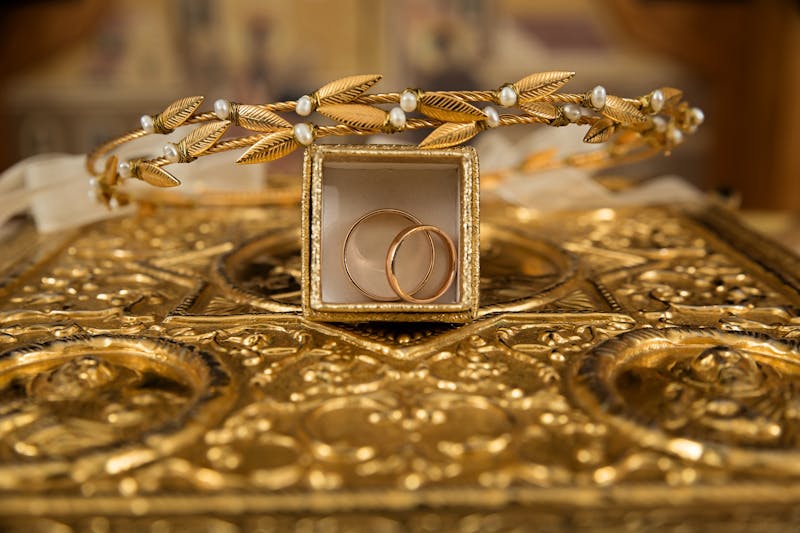Gold IRA Transfers vs Rollovers

Transferring retirement funds from one account to another can be an involved process regardless of the types of accounts you’re working with. Failing to follow distinct stipulations can result in losses making it crucial to research the protocol to ensure you comply.
Many investors choose to transfer or rollover into a gold IRA which offers several benefits such as protecting retirement wealth against constant market fluctuations. Gold has a long history of serving as a hedge against inflation with its value increasing as currency value decreases.
In that same vein, gold IRAs include tax-deductible contributions and tax-deferred earnings before withdrawal. Something to keep in mind is the limited growth potential of precious metals.
Gold investments are void of dividends or interest but increase in value only when gold prices rise. Building wealth is less the focus, it’s more on maintaining stability and security within the portfolio. The best gold IRA firm aims to minimize added costs and potential disadvantages associated with your gold IRA transfer.
Understanding the Fundamentals of Gold IRA Transfers
Many investors are unclear on how does a gold IRA transfer work. This is one option investors have when funding a new IRA, such as a rollover or transferring one type of retirement savings plan to another, including a gold IRA. Transfers move funds between plans of the same type.
IRA transfers
A transfer is a direction fund transition from one retirement account to another. The funds don’t pass through the account owner’s hands but are essentially a transfer-to-transfer from the existing financial institution to the custodian managing the new gold IRA account.
Transfers are less restricted when moving funds compared to rollovers. There’s no 60-day stipulation because the funds never separate from a tax-advantaged medium and investors can transfer funds multiple times throughout the year.
Choosing between a transfer and rollover depends on your specific needs, purposes, and circumstances.
It’s wise to consult with a financial counselor or tax professional before committing to become familiar with the stipulations associated with each option and the potential tax implications. Read here for details on converting an IRA to gold.
IRA rollovers
Rollovers involve withdrawing funds from a retirement account to then deposit in an existing or new IRA within a 60-day timespan. This is common when changing jobs or retiring. The primary advantage of this choice is avoiding early withdrawal penalties and keeping your retirement savings tax-advantaged status.
Distinct rules must be followed with a rollover such as depositing your direct distribution from the old account into the new IRA account within a 60-day span to avoid penalties and tax repercussions for the distributed amount. Rollovers are also only allowed once each year for all IRAs.
Before a gold IRA transfer can be considered, you must apply and open a self-directed account. Consider the following steps when pursuing a gold IRA transfer.
Opening a self-directed account
Opening a gold IRA involves applying for a self-directed account. These IRAs allow alternative investments including precious metals. The process is relatively simple and straightforward with completion in only a matter of minutes.
You must first decide the type of IRA you want whether Roth, SEP – simplified employee pension, or traditional. Each has distinct tax benefits and guidelines that should be discussed with your financial counselor to ensure it suits your short and long-term goals.
The custodians
Once the gold IRA is opened, it needs to be funded. The custodian for the new account will work with the existing custodial service to arrange a smooth transition. You will need to sign off on the transfer. With a transfer-to-transfer or custodian-to-custodian, there are fewer complications and less potential for losses.
The administrator assumes responsibility for the transfer on your behalf staving any worries about penalties for early distribution if the funds are not deposited to the new account promptly. With rollovers, investors have a limit of one per year, but multiple transfers are possible throughout the year.
Precious metal selection
Once the new gold IRA account is funded, you can choose among IRA-eligible gold products to hold in your IRA. Commonly, investors choose gold coins and bullion as their preferred assets. Still, other precious metals are eligible including palladium, silver, and platinum.
Custodians will work with you to select IRA-eligible metals to avoid non-compliance by choosing outside the IRS-approved options.
Read More: 5 Steps You Need to Take to Successfully Invest in Gold
The depository
Once gold or other metals are selected and bought, the custodian and gold firm will ensure these are shipped to your preferred storage depository. Precious metals like gold must be held in an IRS-approved depository until the items are converted to a different IRA type or sold.
Physical gold cannot be held in an account owner’s personal possession. It must remain entrusted to a custodian until distributions are taken or the assets are moved out of your retirement account.
When transferring an IRA to a Gold account, certain fees should be expected, and these can vary from one custodian to the next. The following are common fees associated with transfers.
- Setup fees: A one-time setup fee covers opening the new Gold IRA and can range up to roughly $150.
- Administrative or custodial costs: The custodian manages the account and charges an annual fee to cover this and administrative costs. The cost can range up to $150 + each year.
- Storage: The IRS stipulates that precious metals including gold held in an IRA must be stored in an approved, secured, and insured facility until maturity. The fees associated with storage are often calculated at a flat rate or percentage of the account’s total value.
- Transaction fees: Depending on the custodial service, transaction fees can be charged whenever metals are bought or sold within the IRA. Additionally, they charge $25+ for wire transactions.
With self-directed individual retirement accounts, owners have greater control over their investments; thus, more people choose to transfer retirement accounts to Gold or other precious metal IRAs.
These are not only a good choice for newcomers in the investing landscape but also for seasoned investors who want to diversify their retirement portfolios and protect the wealth they’ve accumulated.

Pranab Bhandari is an Editor of the Financial Blog “Financebuzz”. Apart from writing informative financial articles for his blog, he is a regular contributor to many national and international publications namely Tweak Your Biz, Growth Rocks ETC.








